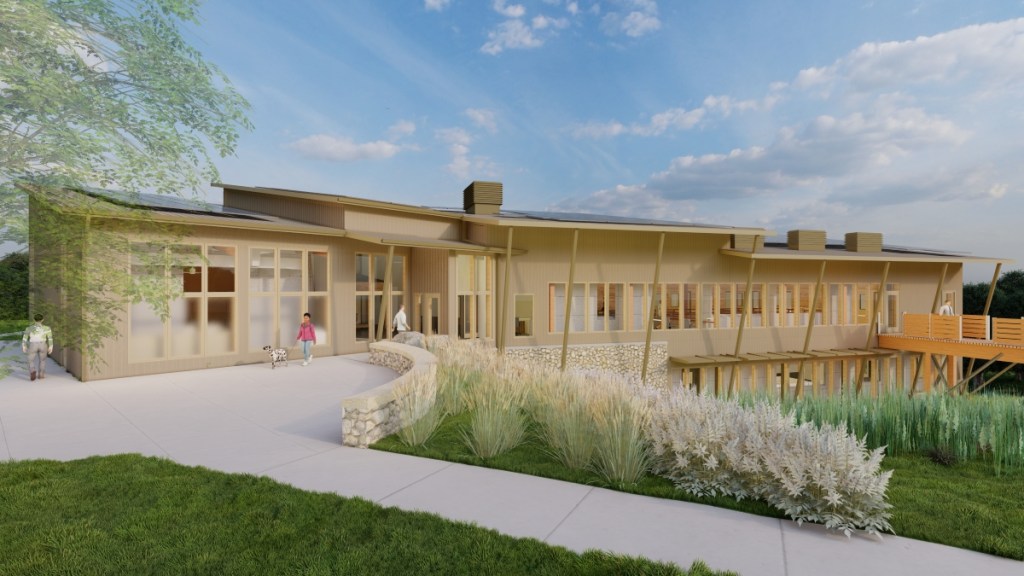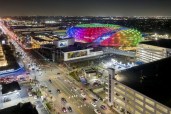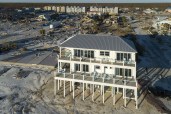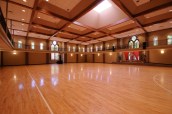The takeaway from the DEEP Western District Headquarters project at Black Rock State Park in Watertown, Conn. goes beyond its Trombe wall thermal energy system.
The $14.2 million, 14,508-square-foot regional HQ—scheduled for completion later this year—is a masterclass on how focus and restraint can help design and construction professionals achieve their sustainability goals without sacrificing architecture, durability, or function. “We never lost sight of the goal,” explains project lead Michael Fortuna, AIA, principal of TLB Architecture of Chester, Conn., the project’s architect.
One of the project’s ambitious sustainability goals is to achieve net-zero energy and LEED Platinum certifications. The structure must also consolidate employees from nine buildings, serve as a welcome center to thousands of park visitors, and function as a regional education center.
Trombe Wall Qualified
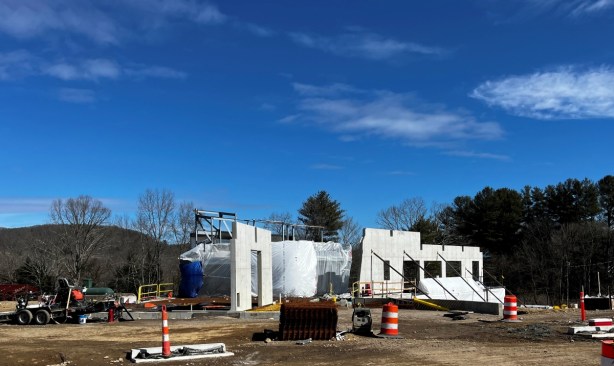
Fortuna and his design team are consistently evaluating which products are available and making the best use of them. For example, their energy conservation strategy includes 16 geothermal wells, a rooftop photovoltaic array, and partially embedding the northern flank of the building into a previously disturbed hillside.
What is there to gain? Remarkable, unobstructed southern exposure: flat, open topography with no treesand no chance of future development.
All the prerequisites for a Trombe wall.
The Best Available Solution
Fortuna says the Trombe wall was selected after several Energy Use Intensity mitigation solutions were researched. “The Trombe wall is viable because it offers passive year-round heating and cooling,” he says. “The wall’s concrete composition also works as structure and finish, reducing overall material use.”
One question early on during the project was how the Trombe wall mass and other concrete elements would affect the building’s carbon footprint. “We optimized structural design to thin the Trombe wall by more than 40%,” Fortuna says. “We also eliminated the need for additional finish materials and coatings.”
Decarbonization efforts didn’t stop there. The project team also investigated alternatives to cement pozzolans. “We found ground glass pozzolans, produced locally, cut global warming potential by 95% compared to conventional portland cement,” Fortuna says. “We replaced 40% of the cement with ground glass, dramatically reducing carbon content.”
Up to 80% Energy Efficiency
A Trombe wall is a proven passive method to harnessing solar radiation—using conduction and convection for heating and cooling. The system is remarkably efficient. For example, PV panels convert 15 to 20% of solar radiation into useable energy. A Trombe wall converts 70 to 80% of sunlight into heat. During the summer months, the solar angle, extended overhang, and vents at the top of the wall cavity will help induce ventilation and convective cooling.
Concrete Imperative
The decision to utilize a Trombe wall system reflects the project team’s pragmatic approach. “When you start down the path to net-zero, it’s tempting to do too much,” Fortuna says. “Some things must be sacrificed for the budget’s sake. Set priorities and stick to them.”
It is imperative to use concrete when reaching net-zero energy efficiency. “Our responsibility as architects and engineers is to work cooperatively with the ready-mix industry to advance the most sustainable solutions,” he says. “Research is advancing rapidly. The promise of zero-carbon concrete is on the horizon.”
Learn more about how to achieve sustainability goals on your next project with next generation concrete.
